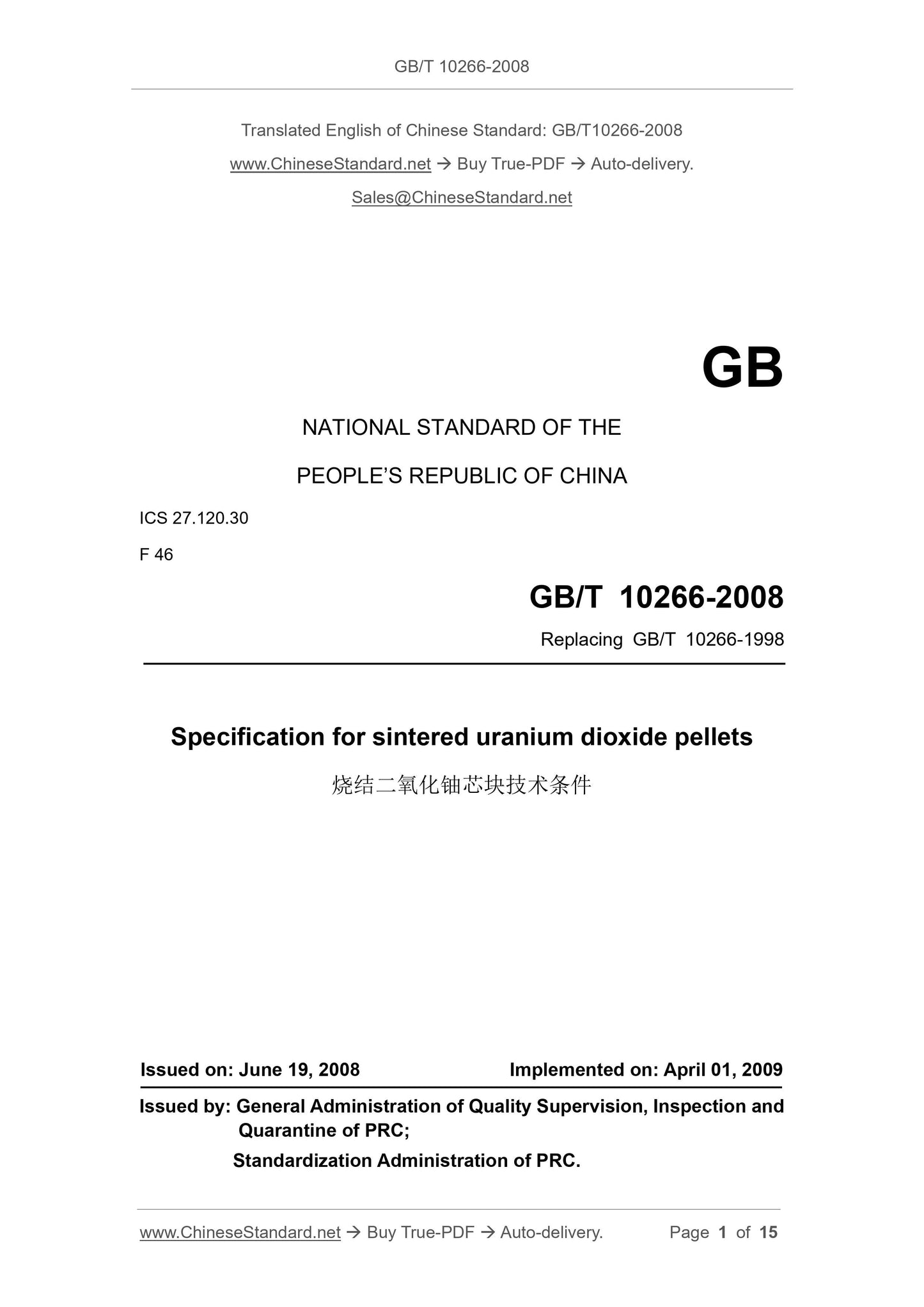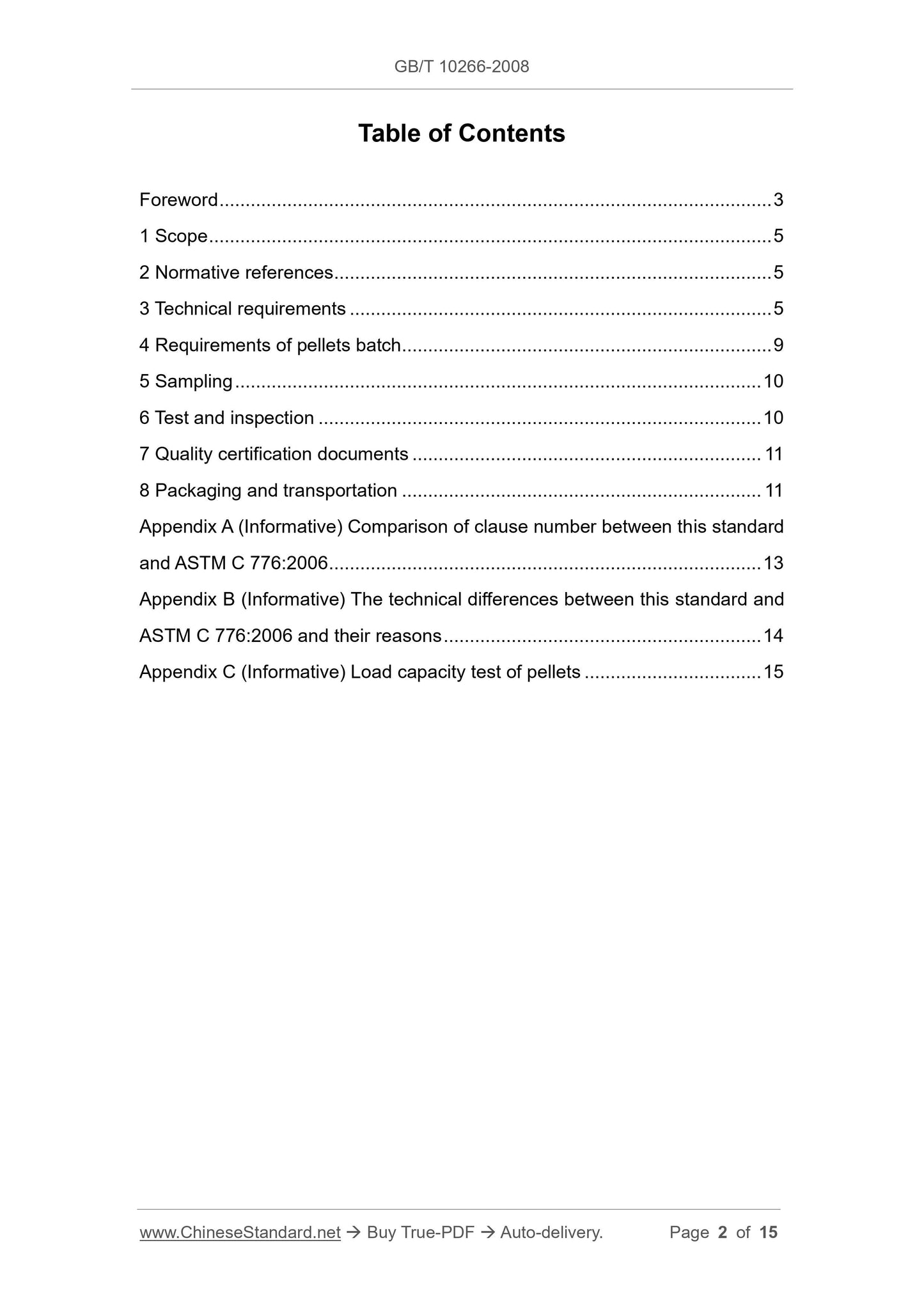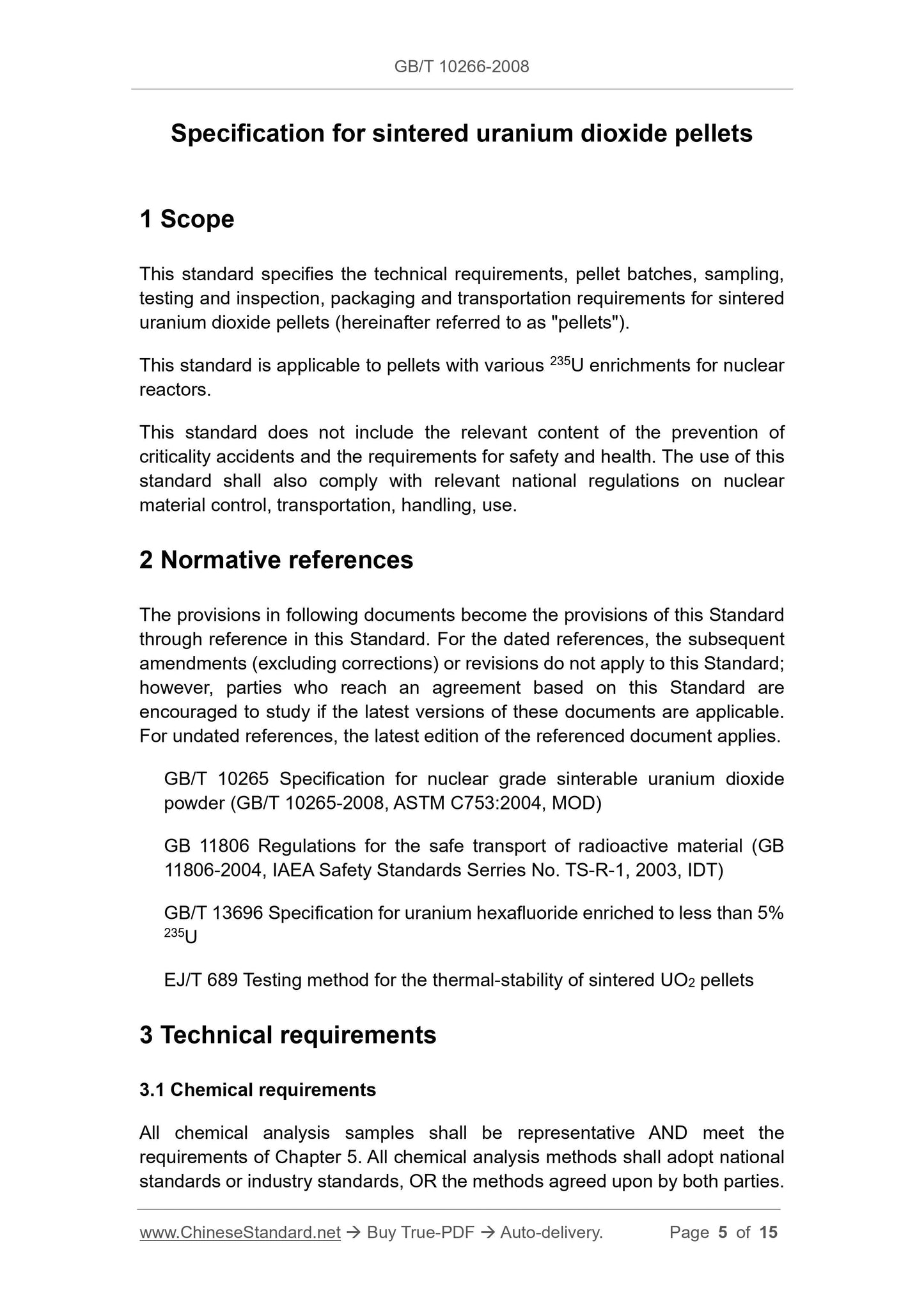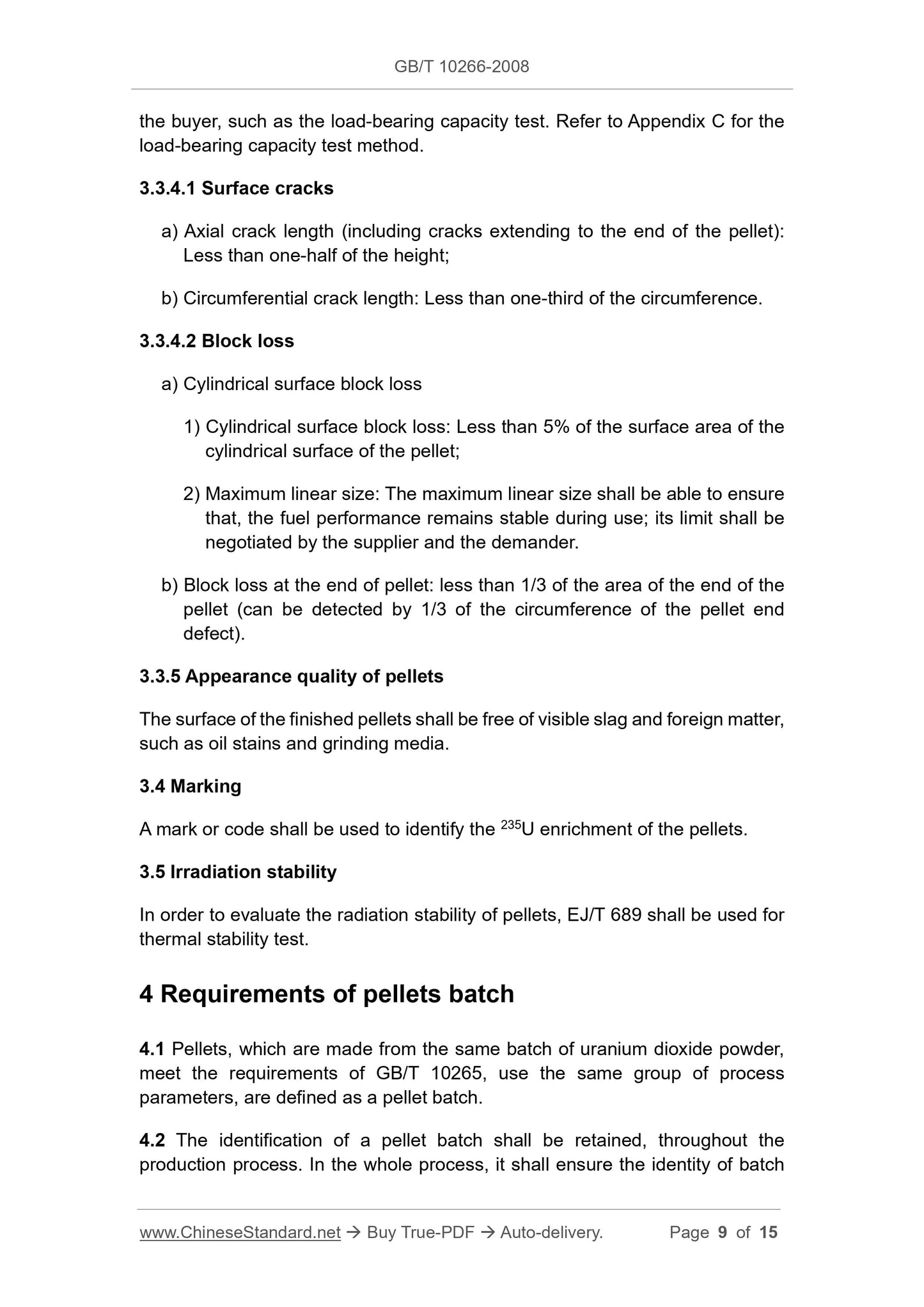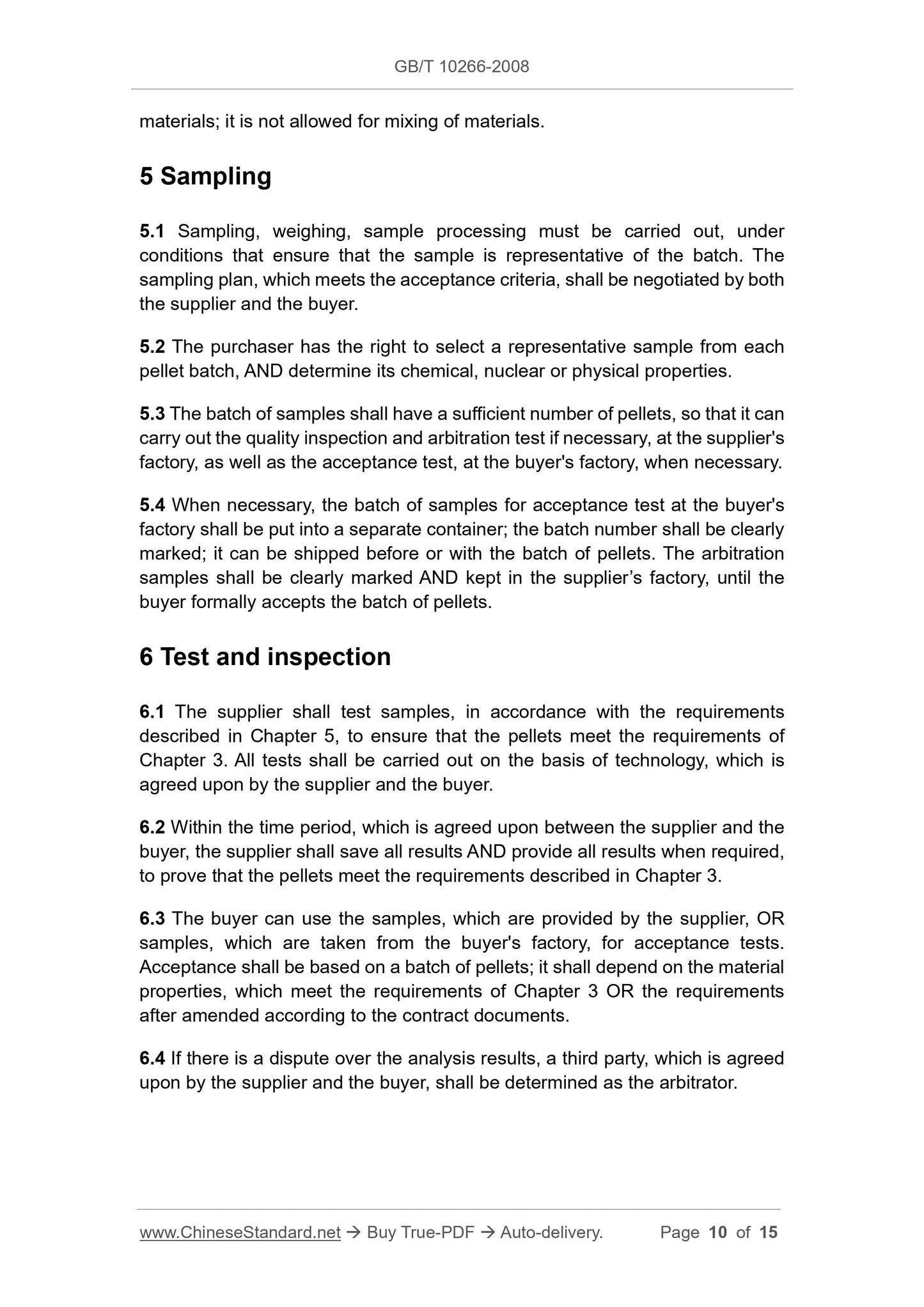1
/
of
5
www.ChineseStandard.us -- Field Test Asia Pte. Ltd.
GB/T 10266-2008 English PDF (GB/T10266-2008)
GB/T 10266-2008 English PDF (GB/T10266-2008)
Regular price
$190.00
Regular price
Sale price
$190.00
Unit price
/
per
Shipping calculated at checkout.
Couldn't load pickup availability
GB/T 10266-2008: Specification for sintered uranium dioxide pellets
Delivery: 9 seconds. Download (and Email) true-PDF + Invoice.Get Quotation: Click GB/T 10266-2008 (Self-service in 1-minute)
Newer / historical versions: GB/T 10266-2008
Preview True-PDF
Scope
This standard specifies the technical requirements, pellet batches, sampling,testing and inspection, packaging and transportation requirements for sintered
uranium dioxide pellets (hereinafter referred to as "pellets").
This standard is applicable to pellets with various 235U enrichments for nuclear
reactors.
This standard does not include the relevant content of the prevention of
criticality accidents and the requirements for safety and health. The use of this
standard shall also comply with relevant national regulations on nuclear
material control, transportation, handling, use.
Basic Data
| Standard ID | GB/T 10266-2008 (GB/T10266-2008) |
| Description (Translated English) | Specification for sintered uranium dioxide pellets |
| Sector / Industry | National Standard (Recommended) |
| Classification of Chinese Standard | F46 |
| Classification of International Standard | 27.120.30 |
| Word Count Estimation | 11,192 |
| Date of Issue | 2008-06-19 |
| Date of Implementation | 2009-04-01 |
| Older Standard (superseded by this standard) | GB/T 10266-1998 |
| Quoted Standard | GB/T 10265; GB 11806; GB/T 13696; EJ/T 689 |
| Adopted Standard | ASTM C776-2006, MOD |
| Regulation (derived from) | Announcement of Newly Approved National Standards No. 11 of 2008 (No. 124 overall) |
| Issuing agency(ies) | General Administration of Quality Supervision, Inspection and Quarantine of the People's Republic of China, Standardization Administration of the People's Republic of China |
| Summary | This standard specifies the sintered uranium dioxide pellets of the technical requirements, the core block grant, sampling, testing and inspection, and packaging and shipping requirements. This standard applies to nuclear reactors with a variety of 235U enrichment pellets. This standard does not include the relevant contents of criticality accident prevention and safety, health and other requirements. Using this standard while respecting national control of nuclear materials, transportation, handling and use and other relevant regulations. |
Share
